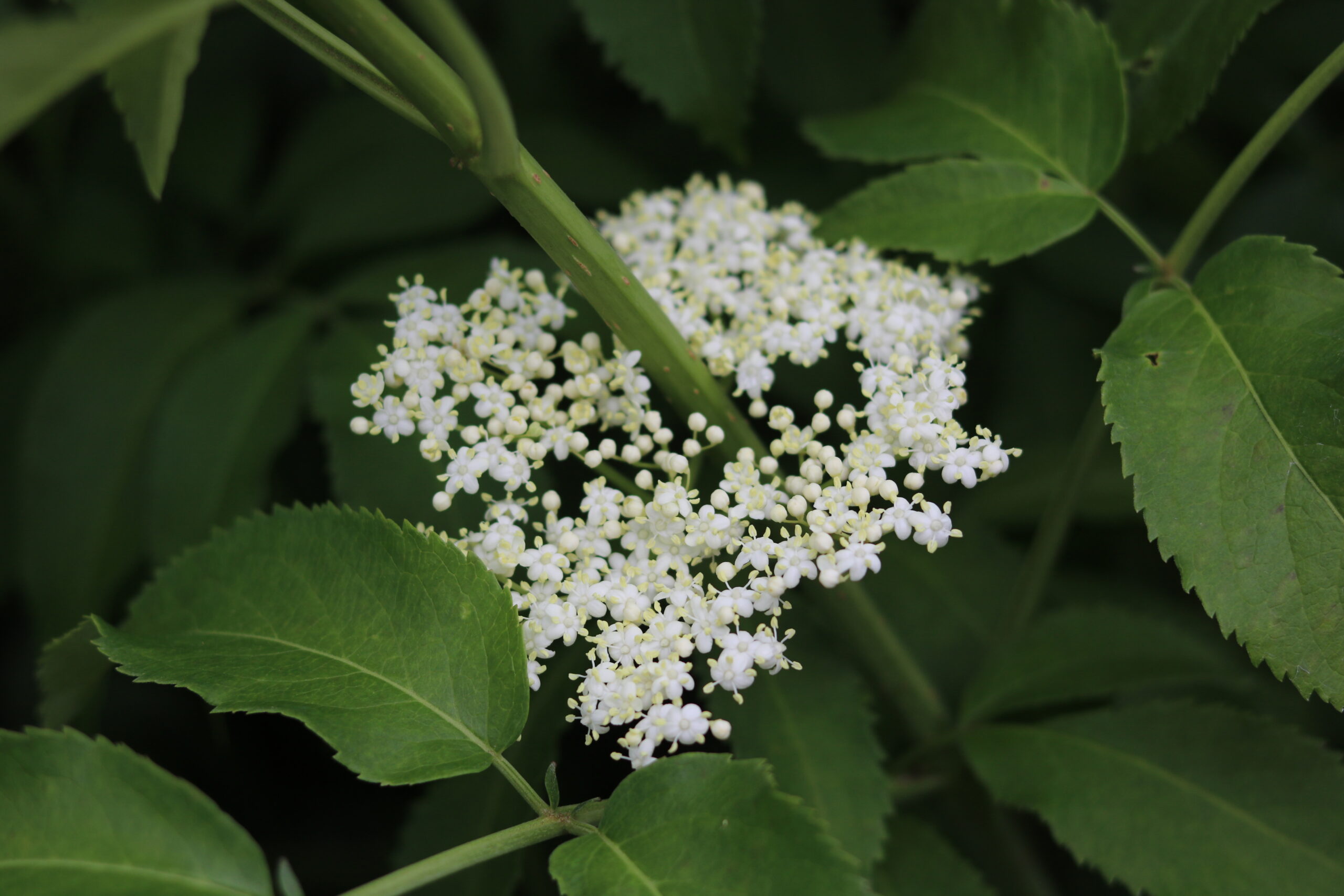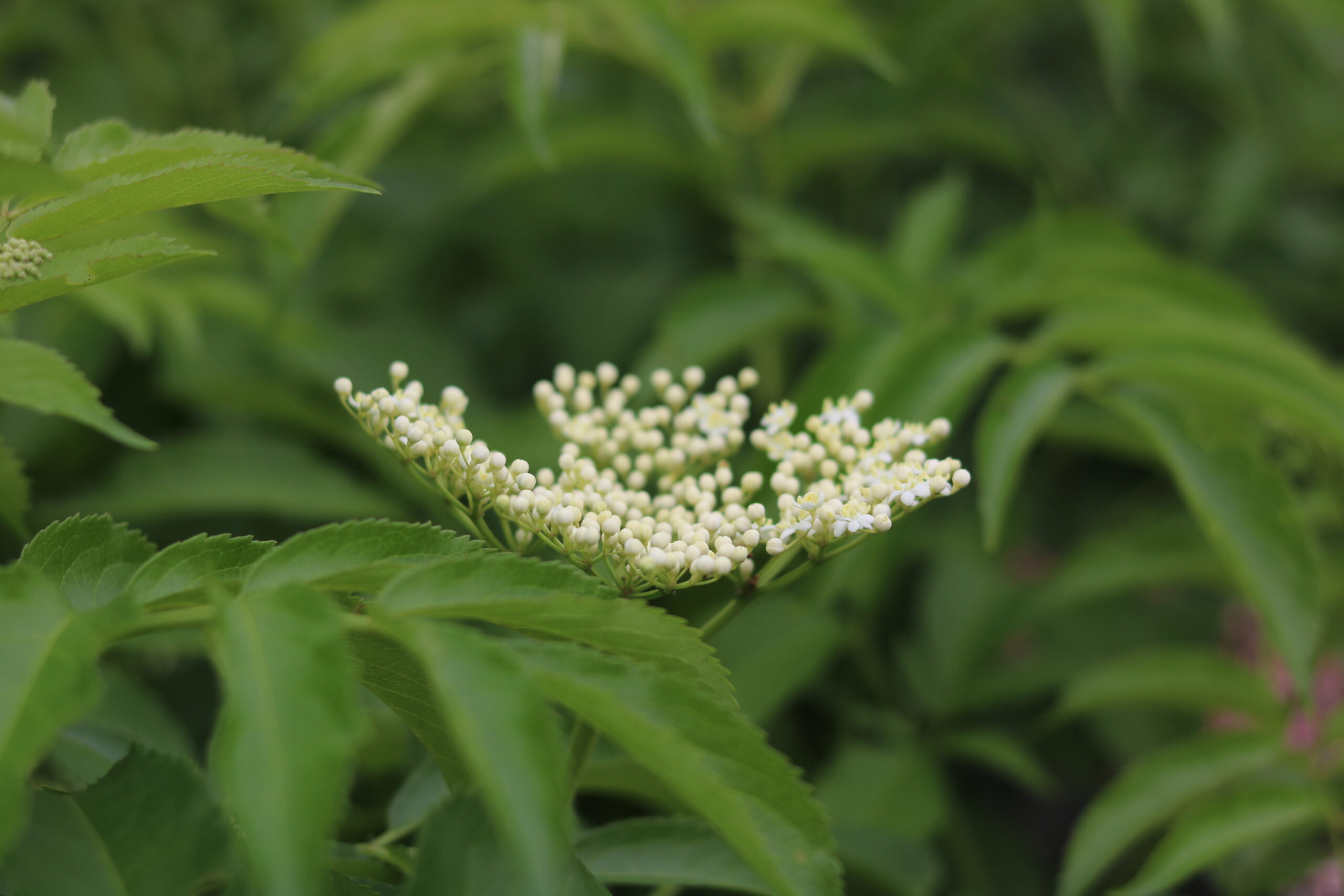



Why We Love It:
American Elderberry is a multi-stemmed deciduous shrub that is native to North America. It provides year-round interest – in the early summer, showy and fragrant white flowers emerge in dense clusters followed by purplish-black berries (drupes) in the early fall. Their drupes can be used in a variety of culinary treats, including jams, jellies, pie fillings and elderberry wine. Their fruits are also attractive to wildlife, including birds and mammals. American Elderberry is also a host plant for a variety of North America’s showiest moths. Their stems and yellowish-gray to grayish-brown bark can add winter interest to the landscape.
Know Before You Plant:
American Elderberry is prone to suckering and spreading when it is happy. It can be used as a specimen planting in the landscape, but know that it will require some maintenance to contain it. Otherwise, if you give it ample room to grow, it will naturalize the area and form a colony.
Where It Thrives:
American Elderberry is one of the few shrubs that can tolerate wet soil. They are often found on streambanks, in moist woodlands, and near ponds or low spots in the landscape. They prefer to be in full sun to partial shade and can tolerate a wide range of soils, but they prefer moist, humusy soils. They do not adapt well to dry, rocky soils.
American Elderberry can be used in pollinator, edible, native or rain gardens. It can also be used to help with soil erosion in moist sites.
Retail Hours
Sun: 10:00am - 3:00pm
Mon: CLOSED
Tue: 9:00am - 6:00pm
Wed: 9:00am - 6:00pm
Thu: 9:00am - 6:00pm
Fri: 9:00am - 6:00pm
Sat: 9:00am - 4:00pm